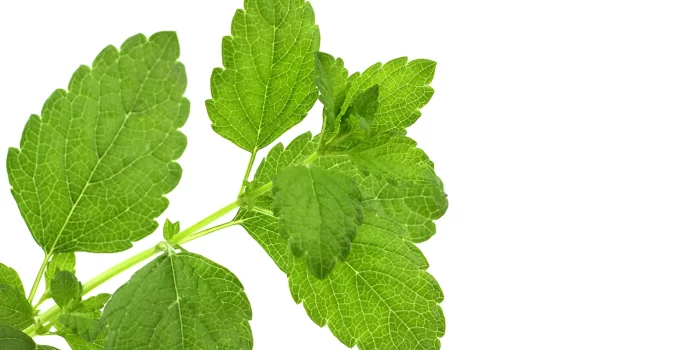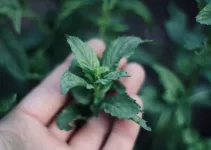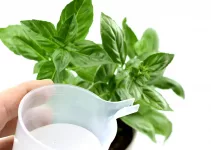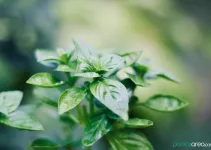In my how to grow lemon balm guide we’re going to cover absolutely everything from what exactly is lemon balm to the best soil to grow it in, watering schedule, whether you should grow it indoors or outdoors, and what you can use this plant for.
However, before going into all that, I want to reassure you that lemon balm can be grown in a pot indoors without many complications. Just as easily, it can grow outdoors. It’s a simple, wonderful herb.
I would say that it’s one of the easiest herbs to grow. But I must be honest and tell you that I pretty much consider all herbs easy to grow.
It’s definitely not on the same level of growing tomatoes indoors or other vegetables. That’s when things are a bit more complicated. Herbs are easy whether we grow them indoors, outdoors or in hydroponic systems.
Table of Contents
How to Grow Lemon Balm Indoors & Outdoors
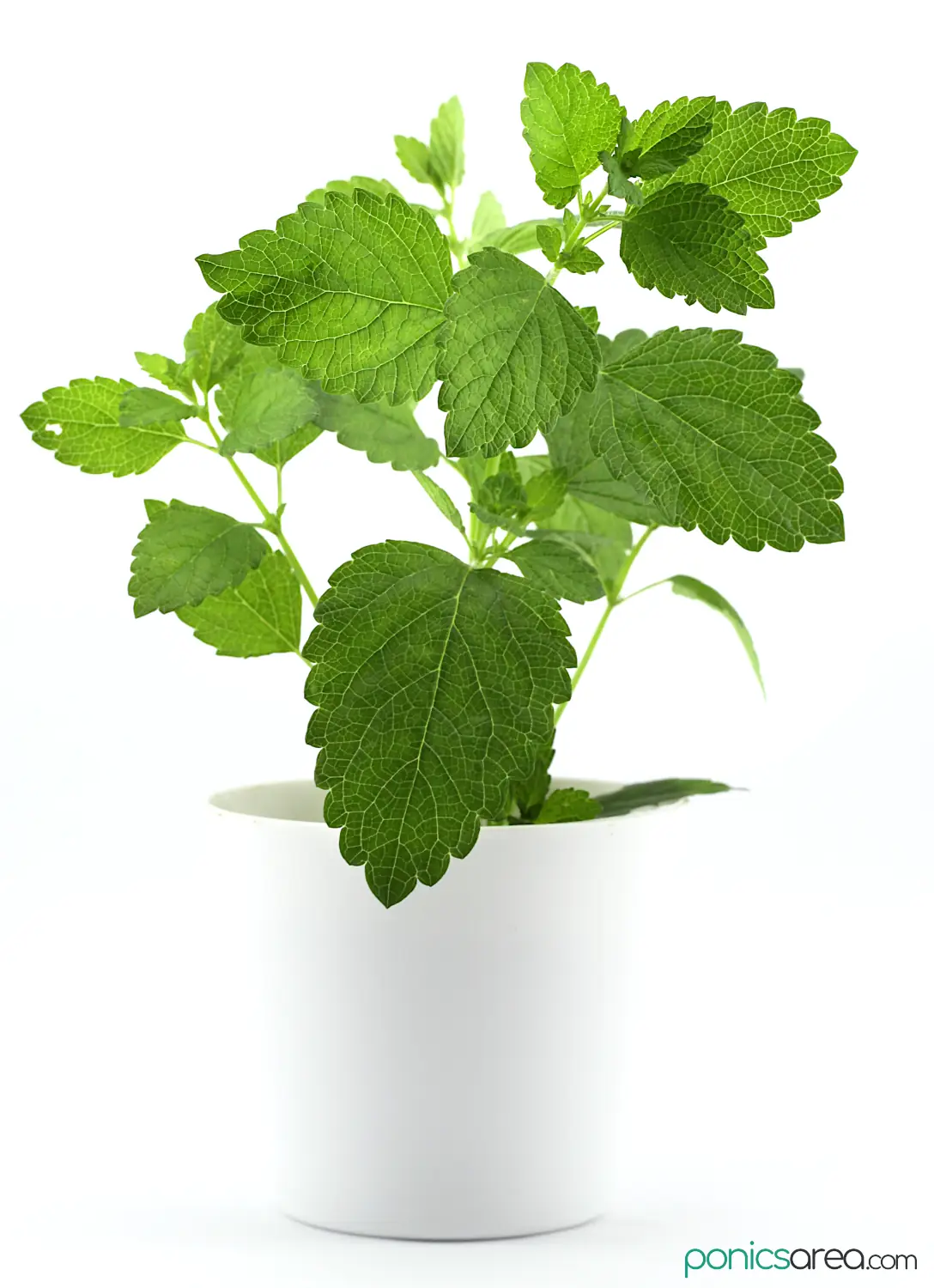
First thing first, this herb is a perennial. It’s well worth learning how to grow lemon balm because it will be with you for quite a few years to come. It should still be replaced after 3-4 seasons, at which point it starts declining.
It requires quite similar conditions to growing mint, in case you need another herb for reference.
Can you grow lemon balm indoors?
You definitely can. It grows very well in pots. I recommend getting a pot that is at least 8 inches deep and 15-18 inches wide.
Keep in mind that the plant can grow about 2 feet tall, especially outdoors.
It’s definitely very easy to grow and won’t require too much work from your part. It’s a herb that doesn’t require any fuss.
If you’re just experimenting with a couple of seeds and you’re not sure about growing this herb, you can start off with any plastic container that you have in the house. There’s no need to spend money on a big pot from the beginning. Just make sure that it’s on the bigger side.
To give you an idea, if you’ve grown mint indoors, you pretty much know what to expect.
How to Grow Lemon Balm from Seed
As with many herbs, you can grow it from seed or from cuttings.
If you don’t know anyone who owns a lemon balm plant, it will be difficult to get the cuttings. It’s not like you can easily buy a live plant from a supermarket, like it’s the case for mint, parsley, basil, thyme, oregano.
So, most of us are left with the option of growing it from seed, whether we saw them in a pot indoors or outdoors in the garden.
Sow seeds outdoors
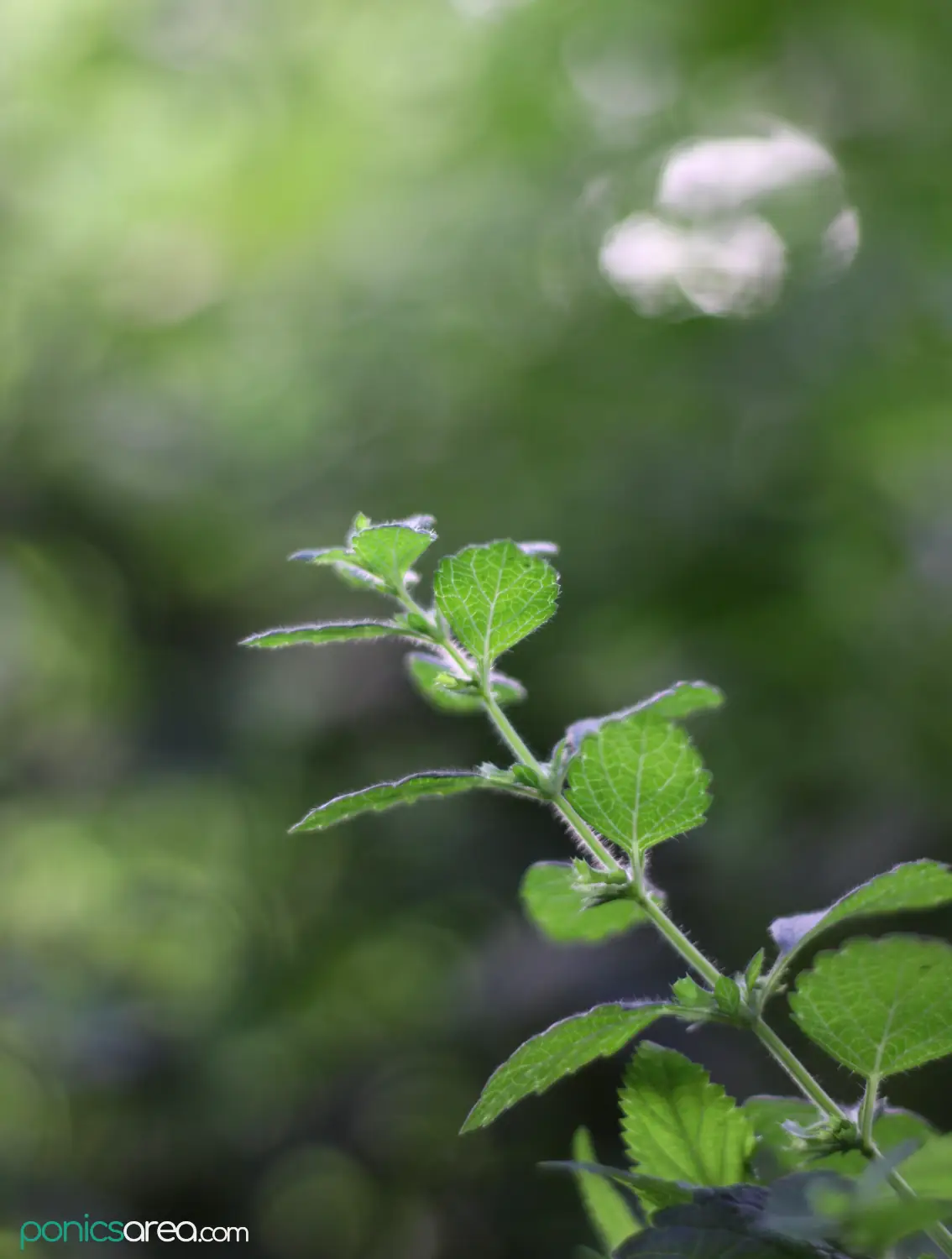
It’s best to start in the spring when the frost has passed and the warm weather it’s making its appearance. Those planting indoors or those living in warm climates are not conditioned by this planting in the spring.
You can sow them directly onto the soil surface or cover them only lightly with soil since the seeds will need light to germinate.
In 5 to 9 days, you should see the sprouts appearing, if the temperature of the soil is warm enough.
However, you can also sow the seeds in late early fall to late winter. Some prefer this period because it can give the seeds a feel for the seasons, making them germinate only when the weather is optimal.
As University of Wisconsin-Madison let us know, we can also sow the seeds indoors 4-6 weeks before the last frost. Transplant the seedlings in the garden when they’re 2-3 inches tall.
Outdoors, the plants should be spaced 16-18 inches apart.
All there’s left to do is to ensure that you’re sowing the seeds in a rich, well-draining soil. But, since this is not a demanding herb, you might manage to grow it in any soil. Adding some compost to it will go a long way in terms of providing nutrients and drainage.
If you’re using a container, always make sure that it has drainage holes.
How to germinate lemon balm seeds
You can sow the seeds directly into the pot that you plan to grow the plant in or use smaller containers and then transplant the seedlings when they’re big enough. You can also use germination trays, if you want.
Just sow your seeds on top of the potting soil. I prefer to let them sit directly on the soil because they need light to germinate.
Water them with a spray bottle immediately after sowing. After that, water the seeds once a day or once a couple of days with the same spray bottle. Don’t let the soil go dry.
Germination will take 7 to 14 days at 70 degrees Fahrenheit (21 degrees Celsius). In colder temperatures, it will take longer.
How to grow lemon balm: main conditions
- rich well-draining potting soil
- a daily watering schedule, especially during hot summer days – the soil must be maintained moist but not soggy
- if the weather is not too hot, you might only need to water once every few days – the best way to tell is to insert a finger and see if the soil is dry or still moist one inch down
- prefers full sun – that’s one aspect to consider if you’re growing it in a place with short winter days, you could buy a full-spectrum LED bulb, like the GE BR30, which is quite cheap
Diseases
In terms of diseases, it is prone to powdery mildew. This fungus can attack the leaves, especially if your plant is situated in a shady, humid area with poor air circulation.
It won’t kill the plant but it can make it less productive.
Powdery mildew manifests as small, white, round powdery spots on the top sides of the older leaves. As it evolves, it spreads out to the whole plant, including the stems.
In serious cases, it will lead to brown leaves that die.
You can get rid of it by watering the leaves from above, simply washing away the fungus.
The next solution is using sulfur fungicides which are organic.
You can also make your own solution from: 1 tablespoon baking soda + 1/2 teaspoons of liquid non-detergent soap + 1 gallon of water. Spray this mixture onto the herb.
Can turn invasive
This herb can also be quite invasive. Luckily, it doesn’t match the level of invasiveness that mint displays, which spreads through runners.
In the case of lemon balm, once it flowers, it can easily spread quite aggressively through self-seed. That’s quite easy to take care of.
If you want to avoid that, you can directly grow it in pots, even if they’re placed in your garden.
Another way to keep it from spreading is to prune most of the plant once it flowers. You can actually cut back the whole plant and it will grow back in a few weeks, looking healthier than ever.
Pruning will also ensure that it produces a new fresh set of leaves. That’s also the solution for preventing mint from flowering and to also keep it from taking over the garden.
Lemon Balm: All About This Fragrant, Delicious Herb
First of all, let’s see where lemon balm stands, which family does it belong to?
It’s a herb that belongs to the Lamiaceae (mint) family, going by the name Melissa officinalis.
The mint family is extended and it includes all the awesome herbs: mint, sage, oregano, peppermint, marjoram, thyme, basil, lavender, rosemary, chamomile, and the list can go on and on.
Just like mint, lemon balm is a perennial. Moreover, if you didn’t know better, based on their appearance, you can actually confuse these two herbs.
Actually, lemon balm has leaves that look like oversized mint. Their size is one clear indication to tell these two apart.
You can also distinguish between the two based on fragrance: one smells like lemon with a hint of mint and the other, well, like mint.
Lemon balm, just as its name suggests, does have a lemon flavor. That is brought on by the chemical limonene, which is also contained in citrus fruit rinds.
This herb has quite a few impressive essential oils: thymol, citronellal, geranial, neral, limonene.
Varieties
There are varieties that have quite different scents: Lime, Liqueur, and Citronella.
Even more, there are two varieties that look quite different: Variegata (gold-splashed) and All Gold (golden foliage in the spring).
Native to southern Europe
Lemon balm is usually planted in the garden to attract bees because its flowers are rich in nectar. Bees are attracted by the inconspicuous flowers that bloom throughout the summer. The flowers are usually white but they can have a yellowish or pinkish tinge.
That definitely doesn’t mean that you can’t grow it indoors. In this how to grow lemon balm guide I have covered both because not everyone has access to a garden. Plants are for everyone.
To give you an idea of the sort of conditions it requires for the outdoors, I should tell you that lemon balm is native to southern Europe.
So, you can already draw some conclusions just from this fact. After all, southern Europe has a distinctively Mediterranean climate. This climate is characterized by warm to hot dry summers and cool to mild winters. Sunny skies are frequent throughout the entire year.
Now, there’s one question that arises and we’ll have to answer it: can lemon balm be grown outdoors in other climates besides the Mediterranean climate?
You can definitely grow it in almost any climate. It’s very resistant and easy to grow.
If you live in a place with very cold long winters, I suggest growing in containers. If you have them out in the spring and summer, you can protect the lemon balm during the winter by bringing it indoors. Or you can simply grow it as an annual.
But it is also known for being able to survive long cold winters. Once spring comes around, it will be revived completely. Just as it happens with mint.
Lemon balm and other herbs
Lemon balm has a bright flavor, like sweet lemon, that can complement many herbs, being highly used in herbal teas. It can also be used in wines, liqueurs, and for eau-de-cologne formulations.
It works especially well with chamomile. These two herbs can be used together to make the perfect bedtime tea, for better sleep and mild muscle relaxation.
I will admit that I’m not the biggest fan of the taste of chamomile but combining it with lemon balm sounds just perfect.
When making tea, whether hot or cold, you can further combine it with black tea, anise, fennel, apple mint, lemon verbena, etc.
Another awesome mix is lemon balm and lavender. You can also combine lemon balm and mint.
The main takeaway from my how to grow lemon balm guide is that this is a resistant, easy-to-grow herb and, if you have grown mint, you basically don’t need this guide.

